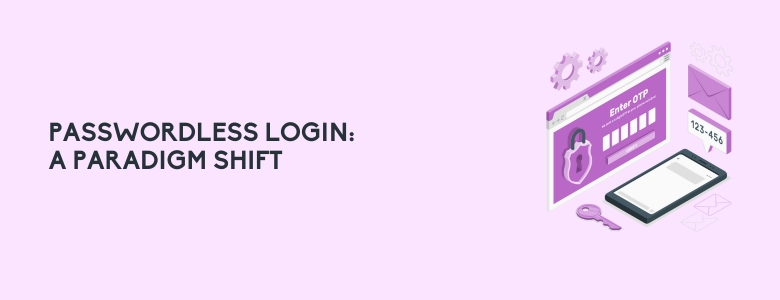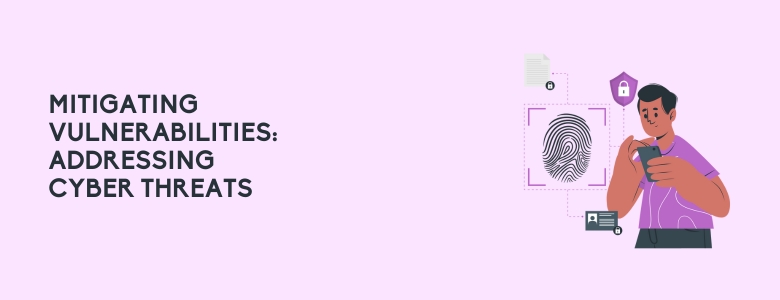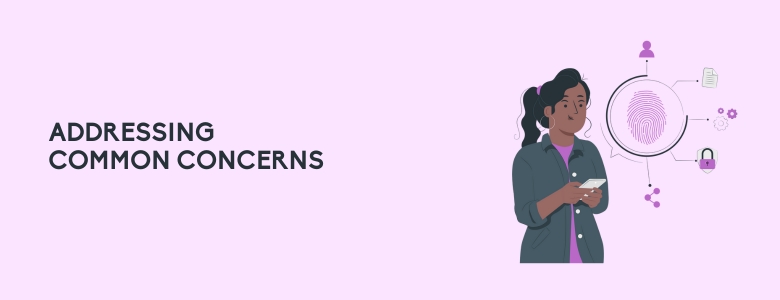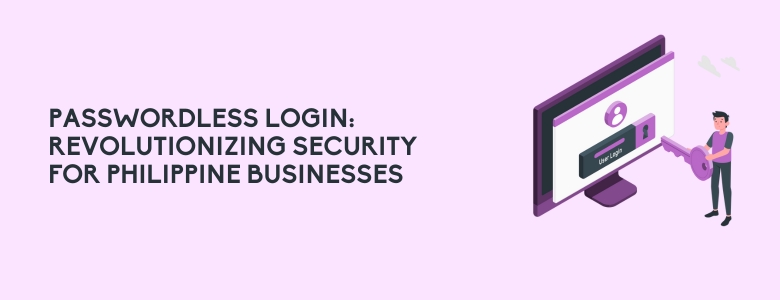In today’s dynamic digital landscape, businesses in the Philippines seek innovative solutions to enhance security and streamline operations. The emergence of passwordless login can change the way businesses approach daily logins through secure and efficient alternatives to username and password logins.
Passwordless Login: A Paradigm Shift

Traditional authentication methods, primarily reliant on passwords, present significant challenges for Philippine businesses. However, the introduction of passwordless login signifies a transformative paradigm shift, eliminating the vulnerabilities associated with traditional passwords.
Enhancing Security Measures
Traditional password-based authentication methods pose significant risks, as passwords are easily stolen or cracked, leading to accounts being compromised. Going Passwordless eliminates the need for passwords altogether, introducing advanced authentication mechanisms such as multifactor authentication, biometrics, and tokenization. By doing so, it mitigates the risks of accounts getting stolen and fortifies defenses against evolving cyber threats.
Streamlining User Experience
User experience plays a pivotal role in driving operational efficiency and user satisfaction. Passwordless login simplifies the authentication process, alleviating the burden of complex passwords. In the Philippines, where users often forget passwords, even leave notes of their passwords right on their desks, creates a security risk for convenience. By going Passwordless, we can eliminate this risk by forgoing this step all together.
Implementing Passwordless Login: Best Practices

To successfully implement passwordless login in the Philippines, it’s essential to follow some general guidelines. By strategically deploying these practices, you can seamlessly integrate passwordless authentication solutions and ensure they perform optimally.
Conducting Comprehensive Risk Assessment
Before rolling out a passwordless solution, it’s crucial to conduct a thorough risk assessment. This involves understanding the vulnerabilities within your organization, complying with relevant regulations, and considering user behaviors. By doing so, you can align your authentication methods with security protocols and effectively mitigate potential risks.
Leveraging Biometric Authentication
Biometric authentication lies at the heart of passwordless login implementation. In the Philippines, using biometric technologies such as fingerprints, facial recognition, and iris scans enhances the accuracy of authentication processes and builds trust among users.
Embracing Adaptive Authentication
Adaptive authentication is another important aspect of passwordless login. These systems adapt to various contextual factors and user behaviors, enhancing security while maintaining a seamless user experience. By embracing adaptive authentication frameworks, Philippine businesses can swiftly respond to threats and regulatory requirements, ensuring both compliance and resilience.
Mitigating Vulnerabilities: Addressing Cyber Threats

Passwordless login serves as a formidable defense against various cyber threats that plague Philippine businesses. By eliminating traditional password-based authentication methods, passwordless login mitigates vulnerabilities such as:
- Phishing Attacks: Passwordless login reduces the risk of falling victim to phishing attacks, where malicious entities attempt to trick users into divulging sensitive information.
- Password Spraying: Passwordless authentication mitigates the effectiveness of password spraying techniques, where attackers attempt to gain unauthorized access by trying commonly used passwords across multiple accounts.
- Brute Force Attacks: With passwordless login, businesses can mitigate the risk of brute force attacks, where adversaries attempt to guess passwords through automated methods.
These methods exploit weak or stolen passwords to gain unauthorized access to sensitive information, posing significant risks to organizational security.
By adopting passwordless login, businesses in the Philippines fortify their defenses against these cyber threats, enhancing their overall cybersecurity posture and safeguarding critical assets from malicious actors.
Addressing Common Concerns

Despite its transformative potential, a passwordless shift engenders common concerns and misconceptions among Philippine businesses. Addressing these concerns fosters informed decision-making and facilitates widespread adoption of passwordless authentication solutions.
Regulatory Compliance
Compliance with regulatory frameworks like the Data Privacy Act of 2012 is crucial for businesses in the Philippines. Passwordless solutions can be tailored to align with these regulations, ensuring legal compliance and safeguarding sensitive information.
Integration Complexity
Integrating new technologies can be daunting due to complexities. However, partnering with experienced providers and using standardized protocols can simplify the integration process. This expedites deployment timelines and minimizes disruptions, allowing businesses to reap the benefits of passwordless login more efficiently.
To learn more about Passwordless technologies, you can email us at marketing@ctlink.com.ph to set a meeting with us today!

